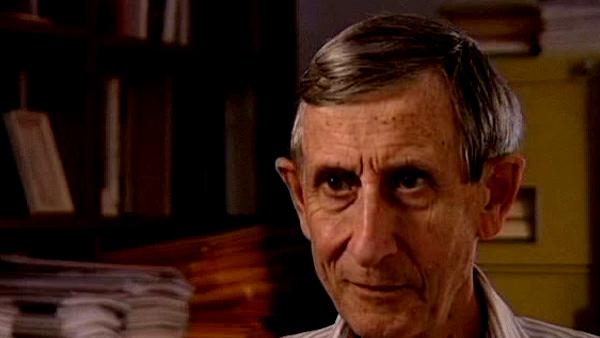NEXT STORY

Lieb and Thirring clean up my matter stability proof
RELATED STORIES

NEXT STORY

Lieb and Thirring clean up my matter stability proof
RELATED STORIES


|
Views | Duration | |
|---|---|---|---|
| 101. One-dimensional ferromagnets | 1128 | 02:32 | |
| 102. The ground state energy of a hard-sphere Bose gas - Elliot Lieb | 1132 | 02:06 | |
| 103. Energy levels of complex systems: background | 1123 | 03:50 | |
| 104. Inviting Mehta to work on circular ensembles | 1115 | 02:13 | |
| 105. My work with Mehta is now more relevant | 1051 | 04:49 | |
| 106. A bottle of champagne to prove the stability of matter | 1423 | 03:40 | |
| 107. Lieb and Thirring clean up my matter stability proof | 1666 | 03:24 | |
| 108. Phase transitions in three dimensional ferromagnets | 913 | 03:00 | |
| 109. Could gravity vary with time? | 1348 | 06:09 | |
| 110. Work by Dyson and Alex Shlyakhter on the fine-structure constant | 1047 | 04:08 |


This was the result of a bet, and it was, I think David Ruelle and Michael Fisher, who had offered a bottle of vintage champagne to anybody who could prove the stability of matter. And so Andrew Lenard was here in Princeton at the Plasma Physics lab and he got interested in that question, and he made considerable progress, actually, with proving it. The problem is, if you have an ideal description of matter it just consists of ignoring nuclear forces, ignoring gravitation, just ignoring magnetic fields - it's the simplest description of matter; it's a set of positive and negative point charges held together with coulometer actions only, non-relativistic. So it's a system of n positive and n negative charges, or you can have different numbers if you like, held together with coulomb forces. The question is: what is the binding energy of such a system as a function of the number of particles? Does it go linearly with n or does it go with a higher power? If it goes - this is all quantum mechanics - if it goes linearly with n then the matter is stable, it means that the binding energy per particle is fixed; that's the situation we live with and everybody believes that that is true, but there's no mathematical proof of it; but if it went with a higher power of the number of particles it would mean that every piece of matter would be a high explosive. When you joined pieces of matter together you'd get an enormous binding energy just by combining, so everything, every chunk of material, would be a hydrogen bomb essentially. So it was a problem that one ought to be able to understand. And the proof of it turned out to be remarkably difficult, but Lenard and I worked on it and managed actually to prove it, but by a method that was extraordinarily complicated and difficult and just opaque. Both Lenard and I are mathematical manipulators and not really physicists, so we didn't understand the physics of the problem, we merely, just by brute force, managed to prove the stability. And the interesting physical fact that emerged was that it works only if the particles have an exclusion principle for one sign of the charge, for at least one, either the negative or the positive and, in fact of course in the real world, the negatives, the electrons, have to have an exclusion principle in order for matter to be stable. If you didn't have an exclusion principle, if both the electrons and the positive charges are bosons, then matter is unstable, and there again we had a conjecture which we couldn't prove, that the binding energy for n particles should go with the seven fifths power of n in the case of bosons, which again Elliot Lieb finally proved rather recently, and we were only able to prove that it wasn't more, it wasn't stronger than five thirds, we never could get the seven fifths, which is the correct power.
Freeman Dyson (1923-2020), who was born in England, moved to Cornell University after graduating from Cambridge University with a BA in Mathematics. He subsequently became a professor and worked on nuclear reactors, solid state physics, ferromagnetism, astrophysics and biology. He published several books and, among other honours, was awarded the Heineman Prize and the Royal Society's Hughes Medal.
Title: A bottle of champagne to prove the stability of matter
Listeners: Sam Schweber
Silvan Sam Schweber is the Koret Professor of the History of Ideas and Professor of Physics at Brandeis University, and a Faculty Associate in the Department of the History of Science at Harvard University. He is the author of a history of the development of quantum electro mechanics, "QED and the men who made it", and has recently completed a biography of Hans Bethe and the history of nuclear weapons development, "In the Shadow of the Bomb: Oppenheimer, Bethe, and the Moral Responsibility of the Scientist" (Princeton University Press, 2000).
Tags: Princeton University, Princeton Plasma Physics Laboratory, Michael E Fisher, David Ruelle, Andrew Lenard, Elliot Lieb
Duration: 3 minutes, 41 seconds
Date story recorded: June 1998
Date story went live: 24 January 2008